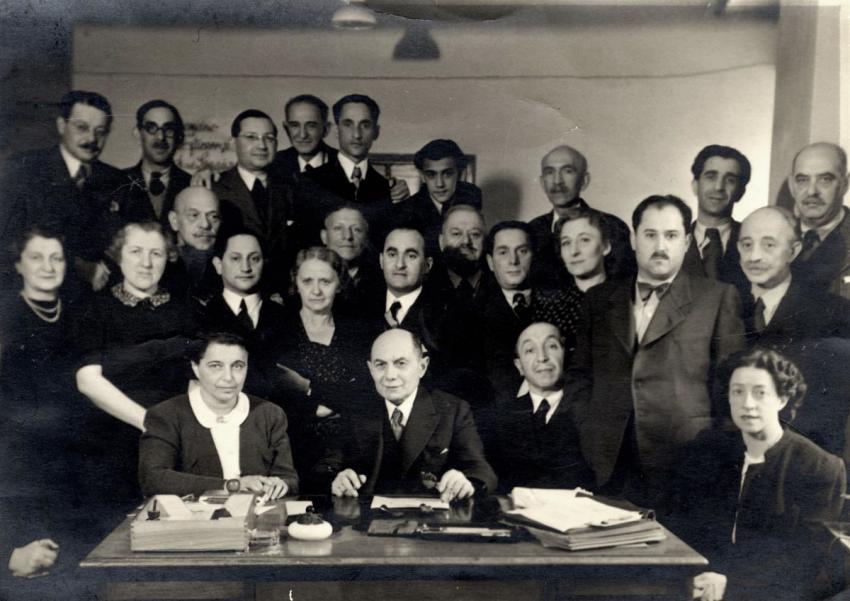When World War II broke out, some 4,500 Bendzin Jews fled eastward into Soviet-occupied territory, but many of them returned to the city. The Germans occupied Bendzin on 5 September 1939. Dozens of Jews were murdered in the first days of the occupation. Anti-Jewish decrees were issued, including the order to wear an identifying armband with a blue Star of David.
In order to exploit the Jewish workforce, the Germans established an agricultural farm in Bendzin. At the time, the members of Zionist youth movements in the city numbered about 1,500. These youth movement members – affiliated with Dror, Hashomer Hatzair, Hanoar Hazioni, Gordonia, Betar and others – made use of this farm for the purposes of pioneer training and underground political activity. The first agricultural crop was harvested in the summer of 1940.
The youth movements' volunteer endeavors included educational activities and aid enterprises such as public soup kitchens for starving children. Members of the Judenrat who had previously been affiliated with those youth movements organized partial funding for these welfare activities. The older youth movement members, aged 16-18, organized educational groups for youngsters aged ten and up, to replace the schools that were not operating. Amongst other things, the counsellors of these groups held activities in the open air for their young charges. At the initiative of youth movement counsellors, the Judenrat helped them run a kitchen where the children received two meals each day.
In 1940 and 1941, Jewish refugees from surrounding towns came to Bendzin. In March 1941, the Germans evicted approximately 6,500 Jews from Oswiecim, almost half of whom reached Bendzin, raising the number of Jews in Bendzin to 25,200. The absorption of these refugees in the city was an admirable example of mutual aid. When they arrived, a medical team was waiting for them at the railway station to give them assistance, and youth movement members walked amongst them giving out food, and milk for the babies. Initially, the refugees were housed in the orphanage halls in the city, and the Judenrat made sure they had food. Later on, the refugees were placed with families, or were found housing by the Judenrat.
From September 1941, the Jews of Bendzin were forced to wear the Yellow Star, and were banned from using public transport. Their property was confiscated, and thousands were deported to labor camps. By April 1942, some 6,500 young Jews from Bendzin and Sosnowiec were working in 40 different labor camps.
In May 1942, 1,200 Jews were deported from Bendzin to Auschwitz, followed by another 1,200 in June. In August, the rest of Bendzin's Jews were ordered to report to the square, ostensibly to have their documents signed. In fact, the Jews were subjected to a selection, but members of the youth movements managed to smuggle hundreds of Jews designated for deportation out of the square. Some 5,000 Jews were deported to Auschwitz, and dozens more were murdered during the selection.
In early 1943, approximately 12,000 Jews were working in factories in the city. Others worked in the camps established by Organization Schmelt. In April 1943, a ghetto was established in the city, confining the 19,000 Jews of Bendzin and Jewish refugees living in the city. In June, the German police surrounded the ghetto and rounded up the Jews. Dozens who tried to escape or hide were shot. In the Aktion, which went on for two days, some 3,600 Bendzin Jews were deported to Auschwitz. Hundreds more were taken from the ghetto to work in Schmelt forced labor camps.
In August 1943, 30,000 Jews from the ghettos of Bendzin and Sosnowiec were deported to Auschwitz, and the ghettos were liquidated. The hundreds of Jews still working in labor camps were deported to Auschwitz in January 1944.
Yad Vashem Photo Archives 5255/7







